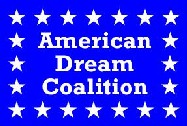
 |
|
The Guide to the American DreamLand Use
|
Land-Use MythsMyth: Land use influences transportation.Reality: Transportation technology influences land uses, but not, for the most part, the other way around.An article of faith among smart-growth adherents is that there is a connection between transportation and land use that allows planners to reduce the amount of driving people do by regulating land uses. Higher densities, mixed-use developments, and pedestrian-friendly designs are supposed to combine with improved transit services to reducing driving, air pollution, and congestion. In fact, there is a connection between transportation and land use, but it is a one-way street: Transportation technology strongly influences land use, but land use does not significantly affect transportation choices. Until about 1890, the principle method of urban travel was by foot. Employees and their families crowded in apartments close to the factories or offices they worked in. Only the highest people could afford horses or to ride horsecars, and many of them lived in single-family homes in early-day suburbs. By 1890, electric streetcars technology was fully developed and streetcar lines began to creep out of most American cities. Many streetcar lines were actually built by real-estate developers as an incentive to get people to buy homes. Streetcars allowed more people to escape crowded cities, but because they still had to walk from streetcar stations to their homes the neighborhoods of single-family homes they lived in still tended to be fairly dense. The beginning of the end of the streetcar era began in 190? when Henry Ford started building his low-cost Model Ts. Within another two decades, a majority of American families owned an automobile and many streetcar companies were beginning to convert to buses. Automobiles untied people from factories and rail lines and allowed them to live in any density they desired. After the Depression and World War II, increasing numbers of people chose to live in low, suburban densities. Suburban growth not only absorbed the nation's population growth, it also depopulated some of the dense inner cities. Manhattan, for example, lost nearly 40 percent of its population between 1910 and 1980. St. Louis lost nearly 60 percent of its population between 1950 and 2000. Most developments today are oriented around the automobile, but older cities still have remnants of pedestrian or streetcar densities. San Francisco and Manhattan are still much like pedestrian cities. Los Angeles is the classic streetcar city. But Houston, Phoenix, and other sunbelt cities, which did not begin growing until air conditioning was developed, are almost exclusively auto cities. Transportation technology clearly influences urban design. But is there evidence that urban design influence transportation choices? The Federal Transit Administration claims that doubling population density can reduce per capita driving by as much as 30 percent. The Land-Use Transportation Air Quality (LUTRAQ) study prepared for 1000 Friends of Oregon claims that pedestrian-oriented design, such as fronting stores on sidewalks, can reduce driving still further. Yet census data do not support such claims. Comparisons of per capita driving with population density in America's urban areas reveal there is no correlation between the two. Studies that claim to find a relationship between land uses and transportation choices usually focus on the neighborhood level. One recent study claiming to prove that smart growth works was written by John Holtzclaw (of the Sierra Club), Hank Dittmar (of the Surface Transportation Policy Project), and two other authors. Titled " Location Efficiency: Neighborhood And Socioeconomic Characteristics Determine Auto Ownership And Use – Studies In Chicago, Los Angeles And San Francisco," the study examined individual neighborhoods in several cities to see if design influences auto use. The problem with such studies is that they confuse cause and effect. People who can't drive or prefer not to drive will tend to choose neighborhoods that support walking and transit. But that doesn't mean that people who want to drive who are forced to live in dense, auto-hostile neighborhoods will suddenly give up their cars. The best evidence of this can be found in Holtzclaw & Dittmar's own study. In comparing the San Francisco, Los Angeles, and Chicago urban areas, they found that San Francisco has the densest population, the most pedestrian-friendly design, the most intensive transit service. If density and design influenced transportation choice, then San Francisco would have the least driving. But their data also showed that San Francisco has the most cars and most miles driven per capita. Urban Area Land-Use and Driving Characteristics Urban area San Francisco Los Angeles Chicago Population/acre 12.38 10.11 5.20 Transit density 22.66 6.13 18.29 Pedestrian friendly .50 .23 .21 Vehicles/capita 0.71 0.62 0.53 Miles driven/capita 6,291 6,248 5,829Source: "Location Efficiency: Neighborhood And Socioeconomic Characteristics Determine Auto Ownership And Use – Studies In Chicago, Los Angeles And San Francisco," By John Holtzclaw, Robert Clear, Hank Dittmar, David Goldstein and Peter Haas, Transportation Planning and Technol., 2002, Vol. 25, p. 14. |